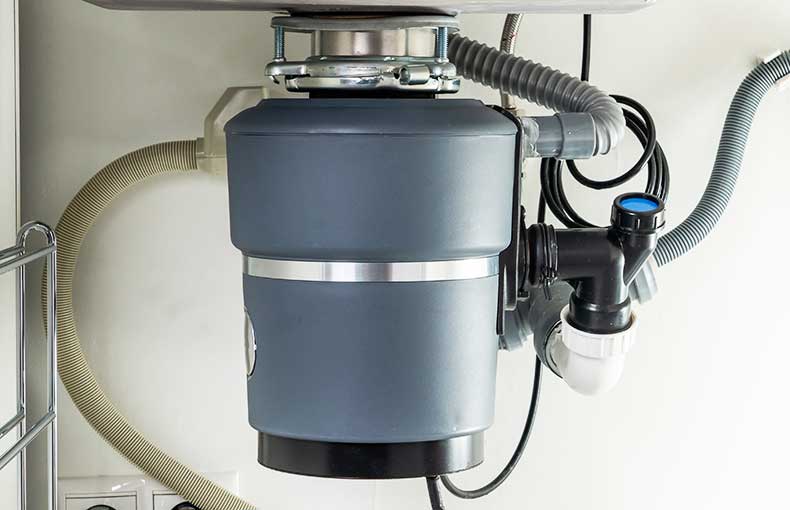Rapid Fixes for a Dripping Garbage Disposal
Rapid Fixes for a Dripping Garbage Disposal
Blog Article
The publisher is making a number of great points related to Why Is My Garbage Disposal Leaking From the Bottom? in general in the content directly below.

Garbage disposals are vital kitchen area devices that help in getting rid of food waste efficiently. Nevertheless, a dripping waste disposal unit can be a discouraging and messy problem to deal with. The good news is, many leakages can be taken care of quickly with a couple of simple steps. In this short article, we will go over just how to deal with a dripping waste disposal unit properly.
Introduction
Garbage disposals are mounted under kitchen area sinks and are created to shred food waste into smaller sized pieces, enabling it to go through the plumbing system conveniently. While these tools are generally dependable, leaks can take place gradually because of damage, loose links, or damage to the system.
Step-by-Step Guide to Fixing a Leaking Waste Disposal Unit
Turn Off the Power
Prior to attempting any type of repairs, make sure that the power to the garbage disposal unit is turned off to avoid the threat of electrical shock.
Locate the Leak
Determine the specific location of the leak and identify the reason
Tighten up Links
Make use of a wrench to tighten up any kind of loosened links between the disposal unit and the plumbing system.
Change Seals or Gaskets
If the leakage is due to worn seals or gaskets, get rid of the old elements and change them with brand-new ones.
Patching Fractures or Holes
For fractures or holes in the disposal unit, usage epoxy or a suitable patching product to seal the broken area.
Recognizing the Source of the Leakage
Prior to trying to deal with a dripping garbage disposal, it is essential to identify the source of the leakage. This can normally be done via aesthetic assessment or by carrying out easy examinations.
Visual Assessment
Evaluate the waste disposal unit device thoroughly for any kind of indications of water leakage. Pay very close attention to areas around seals, gaskets, and link points.
Testing for Leakages
One means to test for leaks is by running water through the disposal device and looking for any type of visible indicators of leakage.
Typical Sources Of Leakages in Garbage Disposals
Worn Seals and Gaskets
Seals and gaskets play an essential role in protecting against water from leaking out of the garbage disposal. Gradually, these parts can weaken, resulting in leakages around the disposal unit.
Loose Connections
The links between the garbage disposal and the pipes system can become loose over time, creating water to leak out during procedure.
Cracks or Openings in the Disposal Device
Physical damages to the garbage disposal, such as fractures or openings in the housing, can also result in leakages.
Devices and Materials Needed for Taking Care Of a Leaking Waste Disposal Unit
Prior to beginning the fixing procedure, gather the needed devices and products, consisting of a screwdriver, adjustable wrench, plumbing technician's putty, replacement seals or gaskets, and epoxy or patching product for fixing fractures or holes.
Testing the Waste Disposal Unit After Repair Work
Once the repair service is full, test the waste disposal unit by running water with it to ensure that the leak has actually been settled.
Preventive Maintenance Tips to Avoid Future Leaks
To prevent future leakages, it is necessary to execute regular maintenance on your waste disposal unit. This includes maintaining it tidy, avoiding placing non-food products or tough items down the disposal, and periodically looking for leakages or other problems.
Verdict
In conclusion, repairing a leaking garbage disposal is a fairly uncomplicated process that can be completed with basic tools and materials. By following the steps laid out in this article and exercising precautionary upkeep, you can maintain your garbage disposal in good working problem and avoid costly fixings in the future.
HERE’S HOW TO FIX YOUR GARBAGE DISPOSAL
WHAT TO DO IF SOMETHING IS STUCK IN YOUR GARBAGE DISPOSAL
If the impeller won’t turn, there’s probably something stuck in the disposal. It could be a steak bone or peach pit, although plumbers report pulling all sorts of inappropriate objects out of disposals, such as bottle caps or aluminum foil. Make sure power to the disposal is off, and look inside to see if you can see the source of the jam.
Never stick your fingers in a disposal. Pull out anything you see with tongs or pliers.
If the disposal still won’t work, it may be time to call a plumber or consider buying a new disposal. GEM Plumbing & Heating is here for all of your garbage disposal needs.
WHAT TO DO IF YOUR GARBAGE DISPOSAL DRAIN IS CLOGGED
Take everything out from underneath your sink and put a bucket or other container under your disposal to catch any water that drains out. Disconnect your disposal from the power supply. If it’s plugged into a wall outlet, unplug it. If it’s hardwired into an electrical box, go to the electrical panel and turn off the breaker for the disposal. Pour ¼ cup of baking soda into the drain, followed by ½ cup of white vinegar. Give the solution a few minutes to fizz and do its work. Look into the disposal with a flashlight to see if you can see an object that might be causing the clog. If you see it, remove it using tongs or pliers. MORE TIPS ON DEALING WITH A CLOGGED GARBAGE DISPOSAL
Never use drain cleaner in a garbage disposal. It can damage the plastic parts inside the disposal. You can also be splashed with the caustic liquid while working to clear the clog. Beware! Never stick your fingers into a garbage disposal. Trust us — not a good idea. In many instances, your dishwasher drains through your garbage disposal. This allows the disposal to grind any large food particles that may be drained out of your dishwasher. There are some jurisdictions, however, where the plumbing code prohibits such a connection. WHAT TO DO WHEN YOUR DISHWASHER DRAINS THROUGH THE DISPOSAL
Run some water in the sink so your plunger has at least a ½-inch of water to create a seal and plunge vigorously up and down several times. You may need to repeat this several times. Run hot water down the drain to clear any residue that remains.

We had been introduced to that editorial about Why Is through a good friend on another web blog. Make sure you take a moment to promote this article if you appreciated it. Thanks a lot for your time spent reading it.
Call Today Report this page